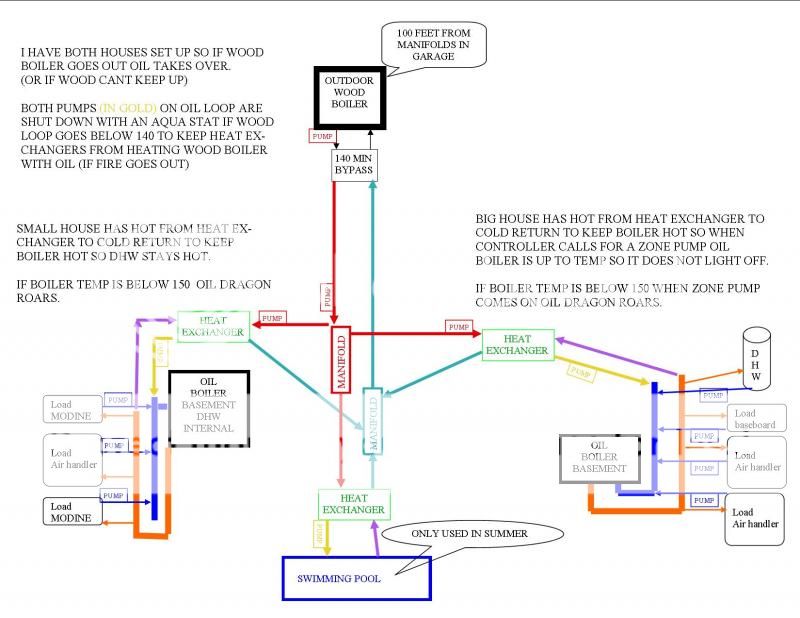I purchased a home that has the start to a great heat system but was never finished. I have read alot and talked to local companies but no one seems to have the knowledge to make this work. One of the joys of living in the middle of nowhere comes with a price of learning how to do projects like this on my own. The previous owner had an in floor pex tube system installed with an on demand hot water heater. He said the system never worked properly and the best he could tell the on demand system just wasnt capable of keeping up. The house sits on about a 1600 square foot footprint, on a crawlspace. There is a very tall open ceiling with lofts on both ends of the home. Basically a 2 story home without the complete flooring upstairs. I am currently heating the house with a pellet stove and a couple of electric space heaters in the bedrooms on very cold nights. This isnt the most economical way to heat a home when -30 degree temps can be normal for extended amounts of time.
He left me the original plans, there is 2 zones and each zone has 4 loops of 325 feet using 1/2 inch pex tubing. Aluminum plates was used to secure the tubing to the underside of the floor between the floor joist, a reflective bubble wrap was installed over the plates and finally fiberglass insulation with paper backing was secured to each floor joist.
I really would like to install a wood burning boiler as a heat source for this system but I dont know where to head and find out exactly the proper procedure to make this happen. Any help or direction with this would be great.
He left me the original plans, there is 2 zones and each zone has 4 loops of 325 feet using 1/2 inch pex tubing. Aluminum plates was used to secure the tubing to the underside of the floor between the floor joist, a reflective bubble wrap was installed over the plates and finally fiberglass insulation with paper backing was secured to each floor joist.
I really would like to install a wood burning boiler as a heat source for this system but I dont know where to head and find out exactly the proper procedure to make this happen. Any help or direction with this would be great.


